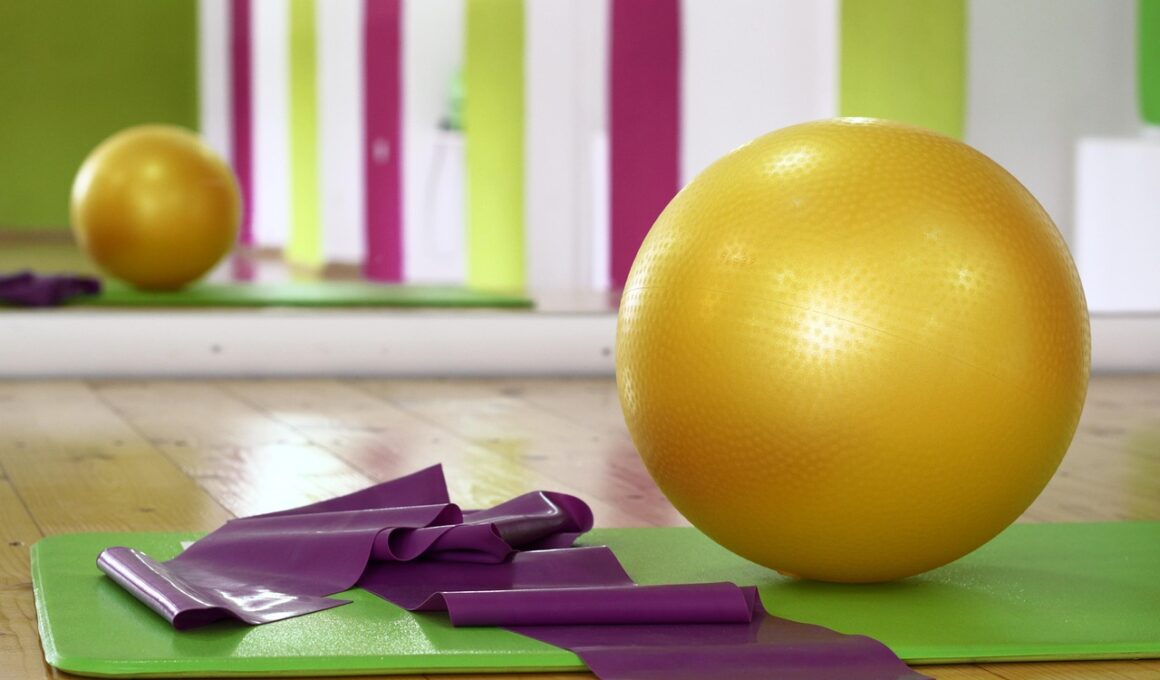Pilates Equipment Brands That Combine Technology and Tradition
Pilates enthusiasts often seek equipment that embodies both modern technology and traditional craftsmanship. A prime example is Balanced Body, a brand renowned for its high-quality reformers and Pilates chairs. Their products not only adhere to traditional Pilates principles but also embrace advanced materials and ergonomic designs. This hybrid approach allows practitioners to experience enhanced stability and support during workouts. Another standout is STOTT PILATES, known for integrating contemporary exercise science into its equipment line. Their reformers feature adjustable elements that cater to various fitness levels. This brand emphasizes rehabilitative benefits, making it popular among physical therapists. Peak Pilates is another key player, marrying classic designs with innovative technology. Their equipment is crafted with sustainability in mind, utilizing eco-friendly materials. Practitioners often praise Peak Pilates for offering a wide range of equipment suited for both studio and home use.
V2 Max Reformer is particularly noted for its versatility, featuring a unique design that allows multiple configurations while ensuring a smooth transition between exercises. Additionally, brands like Gratz Industries emphasize authentic Pilates designs, boasting the original specifications of Joseph Pilates’ apparatus. This commitment to tradition attracts purists who seek the most genuine experience possible. Gratz is often favored for its handmade equipment with an emphasis on quality and durability. Furthermore, LaGree Fitness fuses traditional Pilates with high-intensity workouts, creating a unique fitness experience. Their Megaformer approach showcases innovative features that enhance performance, bridging the gap between Pilates and strength training. This combination appeals to those looking to elevate their fitness journey without sacrificing Pilates’ foundational methodologies. Brands such as Johanna’s Pilates go a step further by incorporating technology into their offerings. Their smart Pilates equipment syncs with mobile apps to track progress, fostering a more engaging workout environment. Total Gym is also recognized for its multifunctional approach, incorporating smooth movements inspired by Pilates principles. Pilates enthusiasts are increasingly turning to brands that reflect these evolving trends.
The Evolution of Pilates Equipment
The evolution of Pilates equipment over the years has been significantly influenced by advancements in technology. Today’s brands are not just focused on creating sturdily built apparatus but also on enhancing user experience through innovative features. Brands such as Allegro Pilates emphasize creating space-saving equipment that doesn’t compromise on any traditional Pilates principles. In contrast, Wunda Chair offers specialized technology allowing users to achieve varied resistance levels, further promoting customizable workouts. Educational workshops conducted by manufacturers enhance users’ understanding of their equipment. Pilates Anytime supports this educational aspect by providing digital classes tailored to equipment use, ensuring users maximize their experience. In addition, many modern brands integrate features such as adjustable heights or widths to accommodate different body types. This focus on inclusivity not only adheres to classical teachings but also speaks to a broader fitness community. As the Pilates community grows, the need for trusted products that balance tradition with innovation will persist, providing long-lasting support for practitioners. This evolving landscape ultimately enhances the quality of Pilates practice.
Also, the introduction of digital platforms and virtual training programs has transformed the way enthusiasts engage with their practice. Effective online communities, fueled by platforms like Zoom or Peloton, often feature specialized equipment designed for the virtual space. LetsMove offers a broad selection of reformers optimized for online workouts, merging traditional methodologies with modern digital ease. The responsiveness of brands to these trends illustrates a commendable shift toward accessibility in Pilates. Additionally, brands like Rogue Fitness have entered the Pilates sphere, merging their strength training equipment with rehabilitative practices, expanding the equipment diversity available. Furthermore, well-designed apps are gaining prominence, guiding users through routines while ensuring optimal form and feedback. This tech-savvy integration encourages consistent practice, empowering users to reach their fitness goals. As the demand for hybrid training continues, equipment made to support various levels of ability becomes crucial. Consequently, we can expect even more innovative offerings in the future, reinforcing the importance of balancing tradition with contemporary technology.
Challenges in Merging Tradition and Innovation
There are notable challenges in merging traditional Pilates equipment with modern technology. One primary concern involves preserving the authentic essence of Pilates while adapting to contemporary needs. Brands like Reformer Pilates face this balancing act, ensuring multiple functionalities do not detract from foundational principles. While they incorporate technology, a focus on the core philosophies of Pilates remains vital. The price point of highly advanced equipment can also present barriers to accessibility for many practitioners. Some brands, like Cameron Pilates, are proactively addressing this through affordable options without sacrificing quality. Another challenge is the need for education; as technology advances, practitioners must be equipped with the knowledge to utilize these new features effectively. This necessitates continued support through workshops and resources provided by manufacturers. In closing, addressing these challenges will be crucial for Pilates equipment brands as they navigate the delicate interplay of innovation and tradition. Ultimately, maintaining a vibrant Pilates community depends on embracing change while respecting the foundational teachings of this beloved practice, ensuring longevity and continued growth.
Moreover, the feedback from the Pilates community plays a significant role in shaping equipment and brand evolution. Listening to user experiences allows brands to refine their designs continuously. This engagement creates a participatory culture where practitioners feel valued and engaged with the brands they choose. Pilatesology provides an excellent example of a community-driven approach by encouraging users to share their workout experiences and preferences. Such initiatives emphasize transparency, allowing brands to adapt effectively. Additionally, many companies invest in user-led workshops, allowing enthusiasts to educate themselves while providing feedback directly. This strengthens the bond between brands and their users, enhancing brand loyalty. Furthermore, new brands are being welcomed into the market, often blurring the lines between Pilates and other fitness practices, increasing overall awareness. These companies contribute fresh perspectives and innovative solutions for equipment needs. The influx of new players introduces creativity that benefits the holistic Pilates community. Therefore, embracing community input is essential for brands dedicated to aligning their equipment offerings with the true essence of the practice.
Future Trends in Pilates Equipment
The future trends in Pilates equipment suggest a surge in digitally integrated pods and reformers that promise greater interaction. Brands are investing heavily in research and development to enhance user engagement by utilizing technology that tracks progress. As wearable technology becomes mainstream, Pilates brands are expected to collaborate with fitness tech innovators, ensuring a seamless blend of workout analysis and community participation. The integration of artificial intelligence may redefine personal training in Pilates studios, customizing routines to users’ changing needs or goals. Companies like Pilates Works exhibit forward-thinking by already collaborating with tech companies to create smart equipment solutions. Additionally, the rise of hybrid classes will necessitate the production of versatile apparatus designed for traditional and modern workouts. Adaptability will be a key quality for equipment brands looking to remain competitive. Sustainability will also remain a focus; brands using eco-friendly materials in their construction meet the growing consumer demand for responsible products. Retrospective designs fused with contemporary aesthetics are becoming increasingly popular, appealing to a broader audience while retaining authenticity and quality. Brands need to embrace these trends to stay relevant.
Ultimately, Pilates brands have a unique opportunity to redefine the future landscape of fitness. By fostering innovation while upholding traditional values, they can cater not just to the elite or professional practitioners, but also to beginners looking for an entry point. Consumer education on effective usage of equipment will be essential as advanced technological integrations become commonplace. As more users prioritize experience-oriented workouts, brands must enhance features that focus on interaction, support, and self-guidance. The education extends beyond mere usage; it encompasses understanding Pilates philosophy, helping users find their connection with the practice. This dual approach fosters a loyal community that continues to support equipment evolution. Enhanced online presence and engagement will continue to shape user experiences and expectations around Pilates equipment in the future, enhancing commitment among practitioners. Thus, as Pilates continues to inspire individuals globally, brands that adapt to these evolving needs while cherishing the foundational teachings will find success in this dynamic fitness space. Reflecting on this journey, it is evident that the future of Pilates is bright and filled with potential for both equipment brands and their passionate practitioners.


